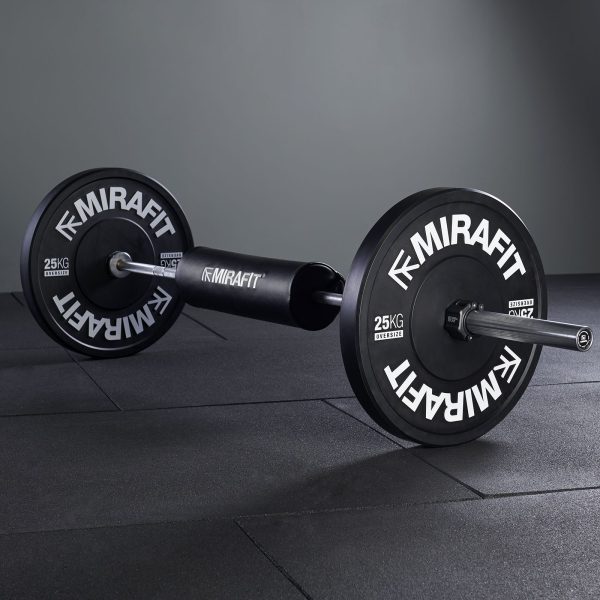Four hip thrust bench exercises to optimise your core
In this article, we look at what a hip thrust bench is, what it’s used for, and how to can exercise using one.
What is a hip thrust bench?
Hip thrust benches come in various styles; some are metal stands with padding. Others, like ours, are wedges covered in firm foam and a UPVC cover to be comfortable and easily clean. It is worth noting that people commonly use weight benches for hip thrusts. However, this is not ideal because a weight bench is generally too high if you are using a weight with your exercise. Another common solution is using a gym step with a cushion; again, this is not recommended as the stability of the movement is compromised by a non-fixed addition of the pillow or pad.
How to set up a hip thrust on a bench
Place the hip thrust bench onto the gym floor, and ensure that the bench is on a non-slip surface. You can check this beforehand by pushing against the bench. Then get a weight bar and some light weights initially. Add the weights to the bar. We recommend that they have collars in place and are fixed. Sit in front of the bench with your back to it. To judge your position, lean back and check that your upper back/shoulders will reach the bench top. Next, please put the bar and weights over your waist. Bring your legs near your bottom, lean back, make contact with the bench top, brace your core, and then drive your hips upward toward the ceiling from the legs.
With your legs at 90 degrees, lift up and then down, repeating this movement. You are effectively creating a bridge with weight across your lap. Refer to the weight and exercises provided by your PT instructor.
How high should a hip thrust be?
Before you do a weighted hip thrust, it is worth using the apparatus with just body weight, and this does two things; one, it familiarises you with the bench height and feel, and two, it allows you to perform the movement without weight. This is important because it will enable you and your instructor to establish a comfortable range for you; everyone is different. The height of a hip thrust should be proportional to you and how you feel when performing the bridge movement. Ideally, this will extend to allow the back to arch comfortably.
What four exercises can you do with a hip thrust bench?
Exercise 1 – Weight plate hip thrust
As the name suggests, this movement uses a weight plate, and it is good to help warm up before you use the barbell. So first, choose a weight plate that is a good warmup weight for you, then place the plate on your pelvis. Next, perform the normal hip thrust movement, ensuring that you have hold of the plate to avoid it slipping sidewards or toward you. Weight plate hip thrusts are good for calorie burn and are faster than other exercises.
Exercise 2 – Barbell Hip Thrust
As described earlier, this is performed by placing the barbell across your hips/pelvis and then raising and lowering the hips. The barbell will naturally sit at the bend point of your hips, but it is still worth stabilising the barbell by having your hands on it. See your PT for more information on sets and weights. Again, this needs to be assessed based on individual strengths.
Exercise 3 – Single Leg Hip Thrust
Once you are confident with exercises 1 & 2, isolating your legs is a good idea as this puts extra resistance in the movement. This is what the single-leg hip thrust does. We recommend starting this exercise by having both feet on the floor; as you lift your hips from the floor position, stop and then lift a leg, pointing your knee to the ceiling. Next, perform the movement by pulsing the hips from one leg with weight, either a weight plate or barbell, then repeat this with the other leg for an intence glute and thigh workout.
Exercise 4 – Frog Thruster
To perform this exercise, you put your soles together, as you would your hands to pray or clap. With your toes in place and touching, flare your knees to open your legs, keeping your feet together. Now perform the hip thrust movement; spreading the legs lets you optimise the glute activation, meaning the outer glute is worked.
Summary – Why we love hip thrusts
We love hip thrusts because they are great for strengthening your core, which benefits your general health. The results are clients feel more supported and stronger, and these exercises can help shape the glutes, tighten the abs and use the thighs, so many of the larger muscles result in higher calorie burn.
This foundationary exercise provides stability and strength to avoid back pain from day-to-day activity and exercise. Hips thrusts are a winner. Recently we got a Mirafit hip thrust bench in our Islington PT workspace if you are interested in using one. PT Workspace gym spaces are always regularly upgraded with modern equipment to support our Studio gym rentals and our Gym Hire for workshops and Filming.
Separately if you’re a PT considering our PT Spaces, please get in touch with the team using the contact page.
Nathan Head Trainer & Founder
P.S If you are interested in finding out about Fitness, why not take a look at the personal trainers who already work with us?
🏠 PT Workspace Islington Personal Training Studio: 87-89 Shepperton Rd, London N1 3DF
Personal Training in Islington – PT WorkSpace
🏠 PT Workspace Milton Keynes Personal Training Studio: Unit 5, Campbell Wharf, Overgate, Milton Keynes MK9 4BG.
Personal Training Milton Keynes – PT WorkSpace
🏠 PT Workspace Harrow Personal Training Studio: Roxeth House, Shaftesbury Ave, South Harrow, Harrow HA2 0PZ
